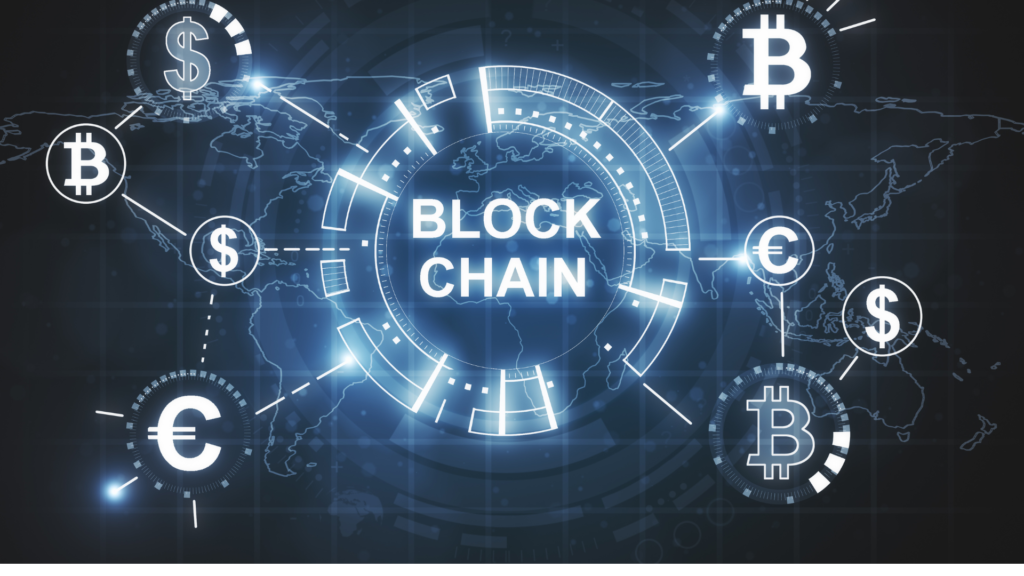In today’s interconnected world, the concept of digital identity has become foundational to how individuals and organisations establish trust online. From logging into services to verifying credentials, our digital identity touches every aspect of life. Amid rising concerns about data breaches, identity theft and fragmented credential systems, blockchain technology offers a transformative path forward. By anchoring identity on the blockchain, we can create a new era of trust—where identity is secure, verifiable, decentralised and user-centric.
The Fragile Foundation of Traditional Identity Systems
Traditional identity management depends heavily on central authorities such as governments, corporations, and banks. These institutions issue and store identity data in large, centralised databases, exposing individuals to a wide range of risks. Every year, millions of people face identity theft and data breaches because their personal information sits in a system that they neither own nor fully understand. When a company’s database is compromised, the damage extends far beyond that single breach—people lose trust in digital platforms altogether.
Moreover, traditional systems make it difficult to verify identity across borders or platforms. A passport, driver’s license, or ID card is valid in one jurisdiction but often useless in another digital context. This siloed model not only restricts access but also slows down innovation. With the increasing demand for seamless online interactions, the limitations of these legacy systems have become more evident than ever before.
The Promise of Blockchain for Identity
Blockchain technology offers a structural shift in how identity can be defined and verified. By decentralising control and distributing data across a secure ledger, blockchain removes the need for a single authority to store or approve identity information. Each individual becomes the custodian of their identity, holding encrypted credentials that can be verified instantly by anyone, anywhere in the world.
This self-sovereign identity model eliminates the need to rely on intermediaries for verification. For instance, instead of uploading copies of identification documents to multiple websites, users could provide verifiable proofs stored on the blockchain. The institution receiving that proof can confirm its authenticity without ever accessing the original data. Such a model strengthens privacy, reduces fraud, and accelerates digital trust.
The immutability of blockchain ensures that once an identity claim is verified and added to the ledger, it cannot be altered or deleted without consent. Every change is recorded transparently, creating an unbroken trail of trust. This capability transforms how digital identity can be used in sectors like healthcare, education, banking, and public administration, where secure and verifiable identification is critical.
Building a Trust Framework Through Decentralization
Trust has always been the foundation of identity systems. People trust governments to issue documents, employers to verify credentials, and platforms to safeguard personal information. However, as digital interactions multiply, this centralised model of trust becomes unsustainable. Blockchain decentralises trust by distributing verification across a network of participants, eliminating single points of failure.
Instead of depending on one institution, identity verification happens through consensus—multiple network nodes validate a transaction before it is accepted. This consensus mechanism not only reduces fraud but also ensures transparency. Every participant can see when and how identity data is verified without having access to the data itself. In essence, blockchain replaces institutional trust with mathematical certainty, creating a framework where both individuals and organisations can confidently engage in digital exchanges.
Another major advantage lies in interoperability. Blockchain-based identity solutions can function across multiple platforms and jurisdictions. A single digital identity, once verified, can be used to access diverse services globally—from banking to healthcare to e-commerce—without repeatedly sharing personal documents. This interoperability makes digital systems more inclusive and efficient, especially in cross-border or decentralised economies.
Real-World Applications and Emerging Models
Around the world, several initiatives are demonstrating how blockchain can reshape the identity landscape. Governments are exploring blockchain for citizen verification and digital voting systems. Financial institutions are using blockchain to streamline KYC (Know Your Customer) processes, reducing both cost and risk. In healthcare, blockchain-based identity allows patients to manage their medical records securely and share them selectively with authorised providers.
Private sector innovation has also accelerated. Technology companies are creating blockchain-based wallets that store verifiable credentials, allowing users to prove their identity, education, or professional qualifications. Educational institutions can issue digital certificates on the blockchain, ensuring that achievements are tamper-proof and easily validated by employers. These examples highlight a global movement toward identity solutions that prioritise privacy, security, and individual control.
Overcoming Challenges and Limitations
Despite its potential, the adoption of blockchain-based digital identity is not without challenges. One of the main hurdles is establishing global standards for identity verification. Without uniform frameworks, interoperability between systems can become complex. Governments and regulators must work together to recognise blockchain credentials legally, ensuring that users can rely on them in official settings.
Privacy also poses a delicate balance. While blockchain’s transparency is one of its strengths, it must be designed carefully when dealing with personal data. Instead of storing sensitive information directly on-chain, many systems use off-chain storage linked through cryptographic proofs. This ensures privacy without compromising verification integrity.
Another challenge lies in accessibility. For blockchain-based digital identity to succeed globally, it must be inclusive. People in developing regions or those without reliable internet access should still be able to participate in the system. Simplified interfaces, offline verification tools, and user education will play a vital role in ensuring equitable adoption.
The Broader Impact on Society and Economy
The implications of blockchain-based digital identity go beyond convenience or security. It has the potential to redefine power structures in the digital world. When individuals own their identity data, the balance shifts from corporations and governments to the people themselves. This redistribution of control could create a more ethical, privacy-driven internet—often referred to as Web 3.0—where transparency and user consent are central values.
In the financial sector, blockchain identity can significantly reduce onboarding times, prevent fraud, and enable cross-border inclusion. For instance, individuals without traditional identification documents could establish verifiable digital identities recognised by global financial institutions, unlocking access to credit, remittances, and online employment opportunities.
For businesses, the shift promises operational efficiency. Companies no longer need to maintain massive databases of user information; instead, they can rely on verifiable credentials presented by users. This reduces liability, enhances compliance, and fosters customer trust. Over time, blockchain identity systems could replace traditional login methods altogether, paving the way for password-less authentication anchored in cryptographic security.
The Road Ahead
The journey toward fully decentralised digital identity is still in progress, but momentum is growing. Governments, international organisations, and technology providers are collaborating to define standards that ensure privacy, usability, and interoperability. As these frameworks mature, digital identity on the blockchain will likely become an integral part of everyday life.
We can expect to see identity wallets integrated into smartphones, allowing individuals to authenticate themselves securely in both physical and digital environments. Universities, hospitals, and employers will issue verifiable credentials directly to these wallets. Border control systems and online platforms will rely on cryptographic proofs rather than physical documents or static passwords.
This transformation represents more than a technological shift—it is a cultural one. By redefining how identity is verified and who controls it, blockchain lays the foundation for a more trustworthy, transparent, and equitable digital society. The power to own and protect one’s identity, once fragmented across databases, will rest in the hands of individuals.
Blockchain is redefining the meaning of digital identity in the modern era. It provides a structure where verification is instant, privacy is preserved, and trust is mathematically guaranteed rather than institutionally assumed. As the world becomes increasingly digital, the need for secure and decentralised identity solutions will continue to grow. Blockchain offers a realistic and scalable path toward that vision, ushering in an era where people can confidently navigate the digital world, knowing their identity is safe, verifiable, and under their control.
Frequently Asked Questions (FAQs)
1. What is digital identity on the blockchain?
A. Digital identity on the blockchain refers to a decentralised system where personal credentials are securely stored and verified using blockchain technology. It allows individuals to control their identity data while ensuring transparency and security.
2. How does blockchain improve digital trust?
A. Blockchain enhances trust by removing central authorities, using cryptographic proofs to verify identity, and preventing tampering or fraud. Every verification event is recorded transparently, ensuring that identity claims can be trusted without reliance on intermediaries.
3. Can individuals control their digital identity?
A. Yes, blockchain-based identity systems enable self-sovereign identity, allowing individuals to decide when and with whom to share their information. This gives people ownership over their identity rather than depending on external platforms.
4. What are the main challenges of blockchain identity systems?
A. The main challenges include establishing global regulatory frameworks, ensuring privacy in public ledgers, simplifying user experience, and achieving widespread adoption across different sectors.
5. Is blockchain identity the future of online verification?
A. Given its ability to offer security, transparency, and user control, blockchain identity is likely to become a cornerstone of future verification systems. As more industries adopt the technology, it will define how trust operates in the digital age.



